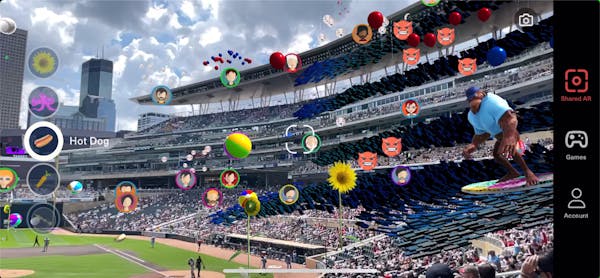In August 2021, the Minnesota Twins appointed Meka White Morris as their senior vice president and chief revenue officer, a new position designed to drive business growth and development for the Major League Baseball organization.
She's also focused on exploring and building new revenue streams for the Twins.
At the top of the list of new revenue stream: selling sponsored jersey patches on player uniforms. Other professional American sports leagues, including the Wild and Lynx, have already allowed this, paving the way for millions of dollars in added revenue for teams. Major League Baseball finally made the decision earlier this year, ruling teams can place sponsored jersey patches on player uniforms starting in the 2023 season.
Earlier this year, MLB's San Diego Padres signed a four-year jersey patch deal with Motorola reportedly worth $9 million per year, a nice-sized check for a team that was $32 million in the red for its operating income during the 2021 season, according to Forbes. The Twins, meanwhile, had operating income of $10 million on $268 million in sales revenue that year.
We recently spoke with Morris, who previously was chief revenue officer for U.K.-based Tappit, a fin-tech firm that works with stadiums and event venues, about the jersey patch opportunity and other revenue-generating opportunities for the baseball team. The interview has been edited for length and clarity.
Q: What are the Twins looking for in a jersey logo partner, and why is this seen as a major opportunity for the franchise?
A: It's arguably one of the highest and most visible exposure opportunities that you can have in sports, outside of, or adjacent to the name of a building. Every time a player shows up on camera, whether in the community or otherwise, this partnership will be on display at some level. While the monetization of this opportunity is important, it isn't more important that ensuring we're connected with a brand that has the same brand values as we do and wants to do more than gain exposure and impressions, but actually link arms and do something that changes and impacts a community we both serve.
Q: Some MLB teams are selling logo space on the baseball field. How are conversations going with companies that want to stich their names into the grass at Target Field?
A: We have many conversations happening in real time about a host of opportunities to connect with the Twins, albeit what we call traditional assets. It's going well, and we feel confident about our position, not only this year, but certainly beyond. The team and their performance and staying competitive is certainly additive to that interest overall.
Q: Why do you think length of game time and the number of games in a baseball season, which some argue is a downside to the game, gives Major League Baseball a bit of an edge compared to other pro sports?
A: At baseball games, you have actually an opportunity to have a conversation, to spend time with clients or people you care about, and there is downtime with which to engage, communicate or grab your favorite ballpark treat and not feel as though you've missed out. The greatest opportunities in baseball to maximize the game, to engage the audience and to insert new experiences is higher than any other sport, purely because of the length of time. That's the linchpin that will propel baseball into the future. We have the gift of time. We just have to determine the best way to use it.
Q: Speaking of inserting new experiences, the Twins recently added augmented reality at Target Field. This is building off what the Twins did last year, by launching a virtual reality hall of fame experience for fans, the first major league team do so. Are the Twins exploring other opportunities to engage in the metaverse?
A: We've explored non-fungible tokens (NFTs) this year, and the league is dabbling in this space. All signs point toward more of that in the future as it relates to our continued lean into innovative technology and the metaverse, so the answer is unequivocally yes. We have this amazing amount of time and there's varying ways to engage different groups of people. There are people who just want to sit in their seat and watch the game and enjoy it, and there are other people who want to be engaged in new and dynamic ways within our ballpark experience. What we're trying to do is explore a way to engage everybody, all with the backdrop of our Minnesota Twins and baseball.
Q: What are other revenue opportunities out there for the Twins?
A: We're taking a deep dive and looking at all of our spaces and trying to think through what's the next and best wave of spaces and opportunities around the ballpark for the future. Is there a different way to approach food and beverage experiences? Is there a different way for all inclusive experiences to live and breathe within the ballpark environment? We've looked at gaming and e-sports and asked, "Is there a component of that that lives in a permeant fashion in the ballpark in the future?" None of that is solidified at this time.

